It's safe to say that most of us who fly fish consider ourselves to be outdoorsmen. That said, most of us have become accustomed to a level of convenience in our fishing excursions. The typical fly fisherman loads up his car with gear, drives to and parks by the river he intends to fish and, after a relatively short walk, is knee deep in said river. The experience is one we've all developed a love for, but is also one that we can't truly call our own. Even in the west, a more "legitimate" version of the outdoors those of us from the lesser East yearn to have out our backdoor, popular rivers see considerable pressure and the river experience is a shared one. Now, that's not to say that the shared fly fishing experience isn't a valuable one. It, without question, is. It's just to say that the shared, more easily accessed version of a trout stream differs significantly from its backcountry counterpart.
Why Fish the Backcountry
Fly fishing in the backcountry offers the fly fisherman an opportunity to see and fish water that the vast majority of fishermen will never experience. In fact, compared to the streams and rivers most of us typically fish, the backcountry offers an opportunity to see and experience a natural environment that very few people will ever experience. The solitude and rawness of nature as it strays from the roads and highways that interrupt it is decidedly different than the more conveniently accessed version of nature most of us are accustomed to. And it's well worth the walk.
If the image of solitude and the idea of seeing a version of nature more removed from human influence isn't enough to lure you into the backcountry, then surely the idea of better fishing must be. On waters with healthy, self-sustaining trout populations, the quality of the fishing typically increases as the distance from roads and parking lots increases. Fish that live in a more remote wilderness are more naive to the wiles of the trout fisherman and, as a result, feed more aggressively and much less selectively. If you're into matching the hatch with size 28 dry flies, perhaps the backcountry isn't for you.
Backcountry, Defined
The definition of backcountry isn't an absolute one. There's no line to cross as you walk into the forest where you suddenly transition from simply being "in the woods" to being in the backcountry. As a general concept, however, being in the backcountry means that you've traveled to a place that isn't commonly frequented by people. Typically, this is because these places are isolated, remote or otherwise difficult to access. Most often, accessing the backcountry means long hikes, commonly over long distances, through difficult terrain or both.
That said, fishing the backcountry doesn't have to mean weeklong excursions into dangerous country with 50 pounds of gear in tow. For me, backcountry fishing these last few years has meant one or two hour hikes into small mountain freestone streams here in my home state of Pennsylvania, to fish for native brook trout. These brook trout, while small (typically 3" to 9" long), are voracious feeders that are beautiful to behold. It is experiencing these fish in their natural environment, in a setting relatively few people expend the effort to experience, that makes them so alluring. They're also preposterously easy to catch.
Backcountry fishing, should you want it to, can also entail significantly larger adventures. Traveling deep into the wilderness, detaching oneself from the modern world and experiencing true wilderness can offer perspective-changing experiences. In his book on fishing Yellowstone National Park's backcountry, Darin Letzring writes, "the trails through the backcountry are time-machine portals, taking you to a place that looks the same as when John Colter first saw it. That's the real beauty of the backcountry. And the only way to really understand it is to go see it for yourself."

Where to Go?
The beauty of fishing the backcountry, even in an era of ever-expanding human sprawl, is that there are still seemingly endless opportunities. Whether you're interested in day-hike backcountry fishing experiences or larger trips involving overnight stays in remote wilderness, North America is teeming with options. You could choose to explore the bountiful backcountry trout streams of the Rocky Mountain west, in spots like Yellowstone National Park, Grand Teton National Park or Montana's Gallatin National Forest. You could hike into Wyoming's Wind River Range in pursuit of huge brook trout in high elevation mountain lakes. If huge trout aren't your thing, perhaps you'd choose to seek out the small and endangered native golden trout in California's Golden Trout Wilderness, a 300,000-acre preserve spanning the Inyo and Sequoia National Forests.
If you live in the half of the United States with a well defined wilderness inferiority complex, opportunities abound there too. As already mentioned, the Appalachian mountains of the east offer a vast array of opportunities to chase native brook trout in impressive environments. Take the Raven Fork, in the Great Smoky Mountains National Park, of which Ian Rutter writes "[the] Raven Fork is perhaps the most under rated wild brook trout stream in the Eastern United States. It is rarely known or fished by even the most enthusiastic fly fishers native to the Smoky Mountain region. The reason is simple. The stream flows through the most remote and intimidating terrain found east of the Rocky Mountains. The stream flows through a steep gorge that escaped the carnage dealt by the logging companies in the early 1900's. Old growth forests tower over dense stands of rhododendrons along the banks. This part of the Smoky Mountains probably looks remarkably similar to the way it did hundreds of years ago."
North of the border, whether east or west, Canada is basically one giant backcountry fishing trip waiting to happen, save for a few pesky spots in between where humans felt the need to place cities.
Everything Else
Tomorrow, myself and a few others will be headed for the previously noted backcountry fly fishing mecca known as Yellowstone National Park for 5 days of peace, solitude and spectacular fishing for wild rainbows, brook and brown trout, native cutthroats and hopefully a few cutbows as well. The process of planning and preparing for this trip has revealed just what a process it can be. Thankfully we've had some help from some excellent resources, such as the aforementioned book by Darin Letzring, Yellowstone's Backcountry Cutthroats, which is an excellent primer and provider of guidelines on building a backcountry fishing adventure in Yellowstone. However, no one resource covers everything, and you'll need to do a good deal of planning and organizing on your own.
In the articles below, we cover several topics related to backcountry fly fishing in more detail. We hope we can help introduce you to the beauty and allure of fly fishing in the backcountry as well as offer some valuable resources for those of you planning your own backcountry fly fishing excursion.
Be sure to dig in a bit deeper:
Backcountry Fly Fishing: Gearing Up and Being Prepared (Multi-part series)
Backcountry Fly Fishing: Kids and the Backcountry
If you're planning your own backcountry trip or are already an avid backcountry fly fisherman/woman, please feel free to share your experiences in the comments below.




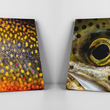
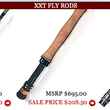

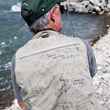



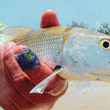



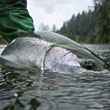
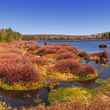







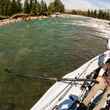
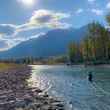


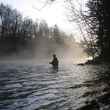
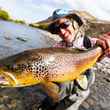
Comments